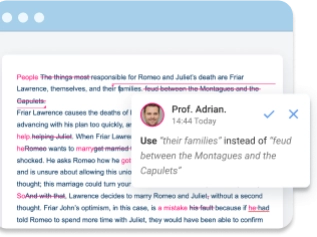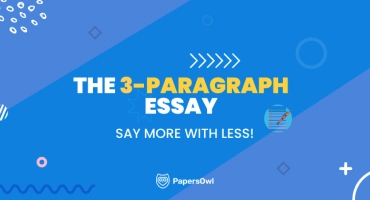How to Write a Discursive Essay: Effective Guide
Table of contents
If you’re pursuing a university degree, writing various assignments is unavoidable. Like it or not, you’ll have to draft at least a few every semester. Among other paper types, teachers favor discursive essays to encourage students to express a neutral standpoint regarding a given issue.
Moreover, this academic piece tests whether you possess polished writing and critical thinking skills. Besides your opinion, you’d also have to provide reliable evidence as a backup for your claim. Hence, a decent discursive essay requires thorough research and preparation.
But what should you pay attention to when writing the first draft? Is pure talent enough, or are there other elements that make a successful manuscript? Below, we unravel the path to an A+ paper!
What Is a Discursive Essay?
A discursive essay aims to elaborate on a given topic in a balanced way. The subject matter is often a dilemma or issue, so there are usually two or three possible solutions. Hence, the ideal piece must include all sides of the problem and present objective and all-encompassing evidence about the topic.
The writer must maintain an impersonal style to avoid polarizing things and being biased. Many students turn to a fast essay writing service when they struggle to stay objective, as they may unintentionally take one side or impose their views. This ensures they receive a balanced paper that meets the assignment’s requirements.
The primary purpose of a discursive essay is to unveil the truth by exploring various topic-related arguments. Therefore, proper research, pondering the issue, and thinking critically, are critical aspects of the writing process.
Discursive Essay vs. Other Types of Essay
Though you might easily confuse discursive writing with other articles, the differences are striking. Let’s see what sets them apart and define their bordering points.
Argumentative
Both kinds of papers come from the same family. They discuss a topic by revealing facts and supporting them with examples. The main difference is that in argumentative works, one standpoint prevails. Though they list and acknowledge all arguments, the emphasis revolves around one point.
Ideally, argumentative writing aims to persuade the audience to adopt a position. The writer presents the claims in a way that convinces the reader to pick a side. Conversely, the discursive essay explains the facts objectively but never urges the reader to shift views.
Descriptive
The purpose of a descriptive essay is to convey a picture for the readers to imagine. To this end, the author uses versatile adjectives and adverbs that help deliver the initial message. Moreover, comparisons, contrasts, and sensory figures of speech are inevitable if you want to create an eye-catching piece.
In contrast, discursive essays provide hard facts free of metaphors, idioms, and similes. The underlying purpose is to inform the readers and not engage their senses with flowery words. When you need to describe information in more detail, the descriptions should be as short and accurate as possible but never overly decorative.
Narrative
Storytelling requires you to conceptualize a narration. In this case, your account can be informal and include descriptive writing elements. Since you have to hook the interest of the audience, the introduction and conclusion must be attention-grabbing and thought-provoking.
These papers follow a structure that usually involves a twist or unexpected events. Besides telling a story, you can also use this style for writing a character analysis essay for college. The smoother your retelling technique, the more successful your work will be.
With discursive essays, the primary focus is on facts and evidence. Hence, avoid weaving a tale because you might easily stray from the central idea. As a result, you can lose your target and omit the critical data you’re trying to present.
Discursive Essay Format
As with any academic work, you must write in a specific outline. To some extent, this venture resembles thematic essay writing because you’re elaborating on a concrete topic and including a clearly-defined thesis statement.
The typical structure of a discursive essay doesn’t differ much from that of other academic papers. It is usually a five or six-paragraph work that includes an introduction, three or more body paragraphs, and a conclusion. Here’s what a standard structure should look like:
- Introductory paragraph
- Body
- Conclusion
Body
- Argument 1 with supporting evidence
- Argument 2 with supporting evidence
- Argument 3 with supporting evidence
- Paragraph with opposing views or counterarguments
Helpful Tips: How to Write a Good Discursive Essay?
Though you might follow the layout presented above and get all your standpoints in order, there are a few minor aspects you mustn’t neglect. Pay attention to the following:
- Start each passage with a topic sentence that describes the most significant point.
- Spend a few days drafting and finalizing your work; doing articles overnight is a no-go.
- Don’t give a loud voice to your standpoint.
- Use formal language that is impersonal. In short, white in third person speech.
- Avoid copying content but rephrase what you found with your own words. You can use a free online paraphrasing tool to help you write a plagiarism-free piece.
- Allow yourself enough time to edit and proofread your work in the end.
- Communicate only fair aspects, but don’t overgeneralize or use clichés.
- Convey your points in an alternate manner if your mentor allows this format.
- Try the SEA method. S stands for making a statement, E for giving examples or evidence to support your claim, and A for applying theory in real life.
Writing a discursive essay can be challenging, but with the help of PapersOwl and its cheap essay writers, you can create a well-structured, argumentative essay in no time. Our writers have the skills and experience to craft an essay that will help you make your point effectively.

How to Write a Discursive Essay?
Before you sit down and start brainstorming ideas, read a few samples online. This way, you’ll get the hang of the writing process and what each paragraph must include. Most importantly, stay unprejudiced and leave your feelings behind. Instead, concentrate on building and supporting your argumentation.
How to Start a Discursive Essay?
While the introduction is usually a fraction of the final work, it is critical. In it, you catch the reader’s attention and present your topic. Hence, ensure you make it as engaging and enlightening as possible. Moreover, the length of this part should be about 10% of the entire assignment.
The discursive essay introduction should contain a few sentences that compress the general idea. Hence, brevity and conciseness are your best shot at delivering the relevance of your subject matter to the public.
How to Develop the Discursive Essay Body?
Once finished, use the introduction to define the core of the body paragraphs. If you have difficulties, order a professional service to can someone write my essay and pick your writer, depending on the topic’s complexity.
However, if you decide to proceed with the discursive essay yourself, put maximum effort into the opening paragraph. It’s advisable to give the strongest arguments first and then continue with the other standpoints. Also, don’t mix different points in a single paragraph but elaborate on one position at a given time.
Finally, take time to brainstorm and present your counterarguments. All statements must be objective and show your impartiality on the matter. When developing the body paragraphs, cite credible references like journals, statistics, and other supporting evidence.
How to End a Discursive Essay?
You must write a conclusion as the final paragraph of your manuscript. Similar to the introduction, this part aims to frame the central idea in simple words. So, if you wonder how to write a discursive essay conclusion, summarize all points stated and give an impartial opinion.
In addition, restate the mentioned arguments only and never introduce new information. Last, it would be ideal if your summary encourages future discussion among the audience. Your recommendations and predictions on the topic should also stimulate further research.
Do’s and Don’ts of a Discursive Essay
Here are some essay writing tips worth considering for a perfect outcome. The same ideas are relevant for writing a poetry essay with ease for university. Tick each hack when reviewing your final copy.
What to Do When Writing a Discursive Essay?
- Different arguments go in separate paragraphs.
- Write well-developed ideas supported by examples.
- Give reasons for every position.
- Use the sequencing method.
- Maintain a balanced style.
- Include linking words and phrases to enhance reading and flow of thought.
- Identify the sources you use by following a proper citation style.
What Not to Do When Writing a Discursive Essay?
- Avoid abbreviated forms and contractions, such as I’d, won’t, and you’re.
- Never include informal and colloquial language like ain’t, gonna, or as good as gold.
- Your topic will be specific so forget about generalizations because they lead away from accuracy and reliability. You might end up with arbitrary conclusions that will spoil the overall impression.
- Emotional language is off-limits because it often signposts prejudice.
- Steer away from personal examples because this means you’re taking a side.
- Don’t insist on one standpoint at the cost of others.
- Avoid stats you cannot prove or reference.
- Free unlimited checks
- All common file formats
- Accurate results
- Intuitive interface







